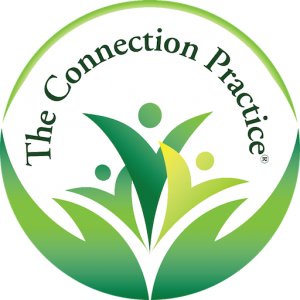The Connection Practice®
A Path to More Peace and Better Communication
 The Connection Practice® is a way to connect to ourselves and others and then access our best intelligence.
The Connection Practice® is a way to connect to ourselves and others and then access our best intelligence.
It helps us:
- feel calmer, centered, more peaceful
- get a better understanding of where people are coming from, so we can communicate better with them
- get a better understanding of where we’re coming from, and communicate that to others effectively
- be honest in a way that’s more likely to promote understanding and less likely to trigger “blowback”
Our practice has two basic aspects:
- Connection to self and others through naming feelings and needs.
- Quick Coherence, which also forms the basis for Heart Insight.
Naming feelings and getting coherent both help to reduce the immediate “fight or flight” response that we tend to experience in stressful situations. They allow us to pause and perhaps do something more constructive than running away or getting defensive or aggressive.
Naming needs and heart insight both help us access our best intelligence.
It’s all ridiculously simple, really, but it has proven its value for individuals, families, businesses, schools, universities, non-profits, and faith-based communities. We find it actually does work a lot of the time, if we practice it.
Here are some things we like about The Connection Practice:
- It’s easy. Well, maybe we should say it’s simple. The basics can be summarized in six steps: feelings, needs, heart focus, heart breathing, heart feeling of appreciation and heart insight. That doesn’t mean it’s always easy. We could probably teach you how to hit a tennis ball in a few minutes, too (if we knew how ourselves), but that wouldn’t make you a great tennis player. Connecting with ourselves and others is an art and a skill that must be practiced! The more you practice, the better you’ll get. (A little coaching doesn’t hurt either.)
- It has good genes. The Connection Practice evolved from the essence of Compassionate Communication (or Non-Violent Communication, NVC) and HeartMath. These are both successful and proven methods. Not surprising, then, if their progeny flourishes as well. (The Rasur Foundation International acknowledges and thanks the Center for Non-Violent Communication and the HeartMath Institute for permission to use the essence of their techniques in The Connection Practice.)
- It’s science-y. For instance, we like that studies have been done showing that not only do people report feeling calmer, their brain waves and body chemistry show measurable changes consistent with those feelings. Similarly, people report that they are thinking more clearly – and their performance on tests supports that. We like that continuing efforts are being made to trace the neurological and physiological effects of the Connection Practice. Sure, there’s a lot that we don’t understand — and probably a lot that no one understands — about how our minds and emotions work. But we appreciate ongoing attempts to verify and clarify the psychological and physical effects of the Connection Practice in an objective and in-depth fashion. (Click here for a very small dose of cool brain science.)
- It’s not religion-y. Not that we have anything against religion. We (Sharon and Michael) believe the great religions carry deep and important truths. But personally we don’t subscribe to the precepts of any one religion to the exclusion of others. We like that The Connection Practice is non-religious. To paraphrase a great Jewish rabble-rouser, it shines on the religious, the “spiritual but not religious”, the agnostic and the atheist alike. A person can practice any religion, or no religion, and find The Connection Practice very useful.
Click here to go to the mother ship.
